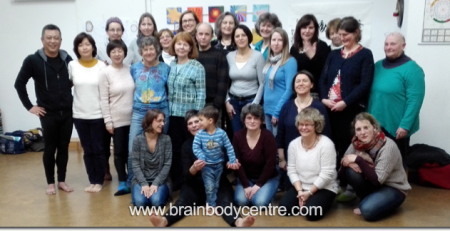Respect for Individual Learning Style
Conrad Ho
In early November 2008, we received a call from the Chinese teacher of my younger son, Yu Sum, who was studying in Primary two. The teacher complained that he repeatedly missed her instructions to him in class. For example, she required pupils to write on the exercise book in alternate lines, but Yu Sum kept writing in every line. When Yu Sum was in Primary one, his teacher also said that he was rather slow in learning English and could not work independently, thus, requiring close adult supervision.
In fact, should we adults demand a Primary one pupil at six to be able to work independently? Who at six needs no adult supervision? The mother tongue of Yu Sum is Cantonese. Right after entering an English primary school, his performance in the first one or two years being behind those from English kindergartens was normal! However, the Chinese teacher’s complaint this time did raise my concern, because she was describing some symptoms in Yu Sum’s listening, comparable to my own observations. For example, he usually asked us to repeat what we said on the phone before he could understand, and he was very sensitive to loud sounds. He was usually scared, rather than excited, by the sound effects of adventure movies.
In the Sunday morning of November 9, when my wife had left for work and my elder son was still in bed, I took the opportunity to do a balance with him. First, I made sounds at different levels of loudness on both sides of Yu Sum’s ears by clapping my hands, with a clear interval in between each sound. Thus, he was clear that there was only one sound each time, and each sound had a different loudness. The exercise was repeated for several times. Yu Sum said he could easily hear and differentiate each sound, and both ears could hear them as clearly.
It seemed that there was no problem in his hearing. Then, I turned to his listening and auditory functions. I wanted to see if he would react differently to certain contents inherent in some sounds. I asked him to repeat a story after I had told him, and to describe some of his personal experiences. The results showed that he could say a lot of things, but in such a piecemeal manner that it was difficult for others to comprehend his massages. This phenomenon of fragmented details without organization indicated that perhaps his gestalt brain functions (usually on the right brain hemisphere) could be more active.
On November 16, the next Sunday afternoon, I helped Yu Sum in his study on reading the clock and the various ways of expressing time in English. In English, if the long hand has passed the 30th minute, the usual way of telling time is how many minutes to the next hour. But in Cantonese, we usually only describe directly as how many minutes after the hour. This difference had created a lot of confusion to Yu Sum. Also, he usually forgot that one hour only had 60 minutes, not 100. Therefore, he was usually wrong when doing the minus operation to find the number of minutes to the next hour. Finally, expressing numbers in English was also a source of challenge for him.
Understanding that Yu Sum’s learning style was to hear details, but could not get the principle or structure connecting them, I spoke specifically to his gestalt brain; accompanied first by drawings, then by an actual clock. The contents I focused upon were the principles of telling time and reading the clock in English. After 10 minutes, Yu Sum suddenly jumped out of his chair in joy. He smiled and said he had understood something. In about 20 minutes, after jumping out of his chair in joy for two more times, he confidently announced that he had completely got it. In disbelief, I spent 5 more minutes asking him different questions, and he did answer all of them correctly.
I had a deep experience in the process. I now know that learning can, indeed, be easy, rewarding and fun if the teacher does match the learner’s personal learning style in the delivery.











